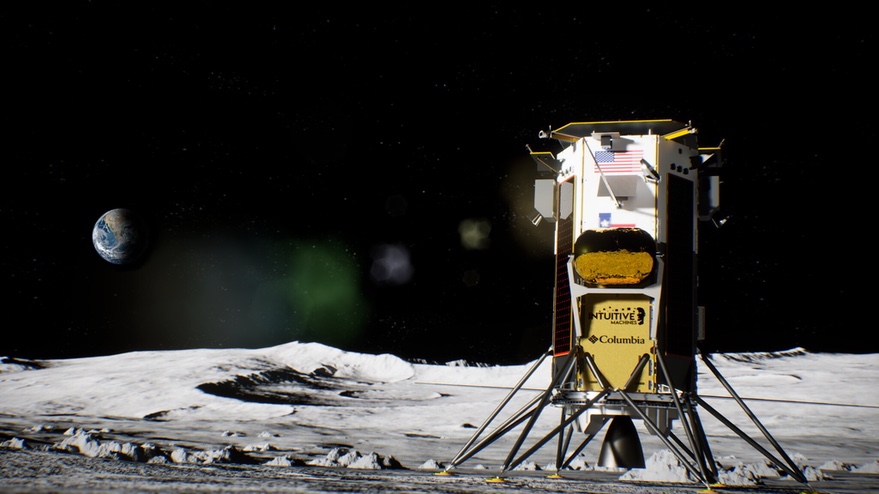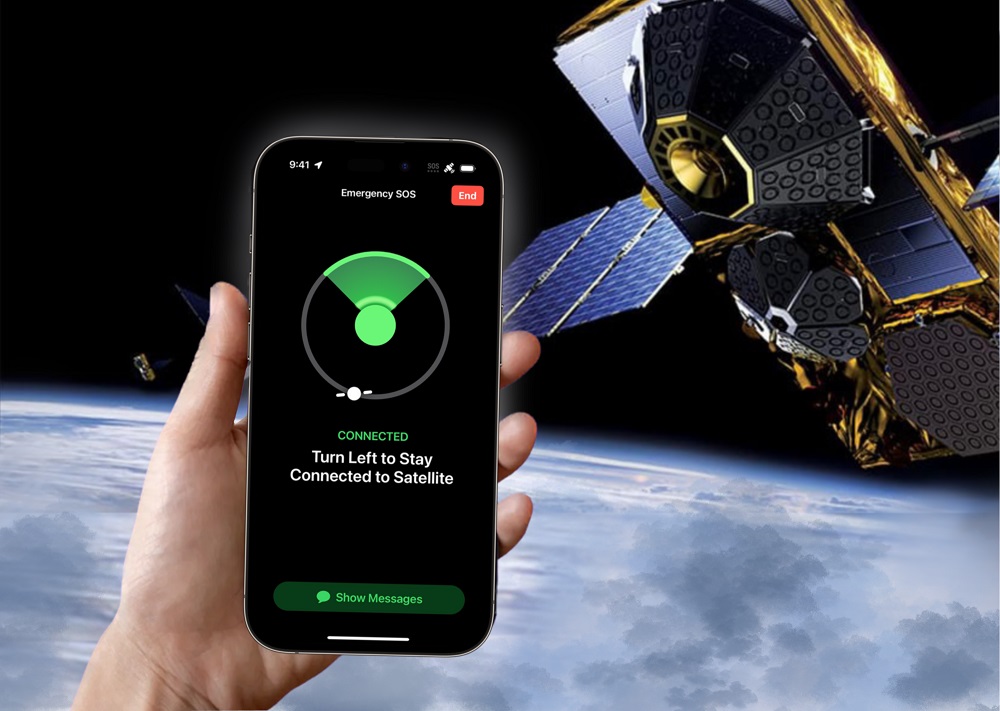Space companies face difficult investment environment
Original Publication Date: 2022-10-11 12:10

Rising interest rates are making it more difficult for space startups to raise money. Some companies are turning to special purpose acquisition corporations, or SPACs. Astra, a space launch company that went public through a SPAC, announced a delisting warning. Intuitive Machines, a company developing lunar landers, announced a merger with a SPAC.
Launch on demand: If satellites are shot down, will Space Force be ready to restock?
Original Publication Date: 2022-10-10 14:00

The U.S. Space Force plans to launch a small satellite mission in 2023. The mission will test the ability of the commercial space industry to deploy a payload on an extraordinarily compressed timeline. The point of Victus Nox is to demonstrate fast turnaround launch operations, known as tactically responsive space.
Yahsat invests in direct-to-cell enabler eSAT Global
Original Publication Date: 2022-10-11 22:02

Yahsat says it has invested in Californian startup eSAT Global. ESAT is developing a chip that would enable phones to connect to its satellites in geostationary orbit. The deal includes a long-term commercial agreement for Thuraya to use eSAT’s technology.
Jumping on the direct-to-cell bandwagon
Original Publication Date: 2022-10-11 21:59

Satellite operators are looking to provide direct-to-cell connectivity for phones. Apple and Huawei recently launched models capable of connecting to a partner’s satellites for emergency messaging services. SpaceX unveiled plans to provide direct- to-cell services for emergency assistance and beyond. More than half a million square miles of the United States are untouched by terrestrial cell signals from any provider.
NASA’s DART spacecraft changes asteroid’s orbit
Original Publication Date: 2022-10-11 20:30

NASA: Asteroid collision with Didymos asteroid changed orbit by 32 minutes. Double Asteroid Redirection Test (DART) collided with asteroid Dimorphos Sept. 26. DART collided with asteroid as a test of the “kinetic impactor” technique. NASA has no plans to conduct additional impact tests like DART.
Inmarsat wins $980 million U.S. Navy contract for global communications services
Original Publication Date: 2022-10-11 16:57

Inmarsat Government announced Oct. 11 it won a 10-year contract worth $980 million. The contract is the second iteration of the U.S. Navy Commercial Broadband Satellite Program Satellite Services Contract. Inmarsat Government, based in Reston, Virginia, is a subsidiary of British communications satellite operator Inmarsat.
NASASpaceFlight.com
The SSLV or Small Satellite Launch Vehicle conducted its launch debut from Sriharikota, India on Sunday, August 7 at 03:48 UTC. The SSLV program’s genesis was a December 2015 National Institute of Advanced Studies proposal to create a “Small Satellite Launch Vehicle-1” to launch small national security payloads on demand.
Commercial Archives
Intelsat's Galaxy 33 (G-33) and Galaxy 34 (G-34) satellites were launched on Saturday. The launch came after scrubbing two previous attempts due to a helium issue. The launch took place from Space Launch Complex 40 (SLC-40) at Cape Canaveral Space Force Station.
International Archives
Epsilon launched from the Mu Pad at the Uchinoura Space Center in Japan at 00:50 UTC on Oct. 12. Live coverage by JAXA of the launch showed what appeared to be a stage 3 ignition failure. It’s the first Epsilon launch not to reach orbit.
Chinese Long March 3B Launches APStar-6C Communications Satellite – Spaceflight101

China conducted a rare commercial launch of a Long March 3B rocket with the APStar-6C communications satellite for APT Satellite Holdings. Long March 3B lifted off from the Xichang Satellite Launch Center at 16:06 UTC on a mission of under half an hour to lift the spacecraft into an elliptical Geostationary Transfer Orbit. Confirmation of launch success was provided by APT Satellite around 40 minutes after liftoff when the satellite had been separated into its target orbit.
Blue Origin’s New Shepard Reaches new Heights in latest Test Flight – Spaceflight101

Blue Origin's reusable New Shepard launch system reached new heights in a test designed to expand the vehicle’s operational envelope by sending it to a peak altitude of 107 Kilometers. Sunday’s flight marked the second for this particular set of hardware, following up on the successful December 2017 mission. Demonstrating that New Shepard can reliably lift its Crew Capsule above the Karman Line represents an important objective of the company’s drive toward beginning sub-orbital tourism flights.
ISS Updates – Spaceflight101 – International Space Station

A veteran NASA spacewalker and an EVA rookie from Japan ended their week with nearly six hours of work outside the International Space Station. The restoration of the Station’s Mobile Servicing System started last year and continued in January to provide Canadarm2 with a new pair of grappling hands.
Featured – Spaceflight101

SpaceX Falcon 9 took to the skies over Florida’s Cape Canaveral Monday afternoon. Falcon 9 lifted a flight-proven Dragon spacecraft into orbit for a critical delivery of science gear, supplies and maintenance hardware. First of at least six cargo ships inbound to the U.S. Segment of ISS this year.
News – Spaceflight101

Russia's Rockot booster to blast off from Plesetsk Cosmodrome on Wednesday. It will carry the Sentinel-3B multi-function satellite. The launch is scheduled to take place at 17:57 UTC (21:57 GMT) on Wednesday. Read more at: http://www.dailymail.co.uk/satellite-news/2013/01/05/satellite-satellite-launches.html#storylink=cpy.
Re-Entry: Long March 11 Rocket Body – Spaceflight101

The CZ-11 fourth stage used leftover propellant for a partial de-orbit maneuver, lowering its perigee to 120 Kilometers to significantly accelerate its orbital decay. It is reportedly built around a YF-50 main engine and conducts the orbital circularization after the three CZ-11 stages finish their job.
NASA Study Suggests Shallow Lakes in Europa’s Icy Crust Could Erupt

NASA is sending the Europa Clipper spacecraft to Jupiter’s moon Europa. There is strong evidence that under a thick crust of ice, the moon harbors a global ocean that could potentially be habitable. The spacecraft will orbit Jupiter and use its suite of sophisticated instruments to gather science data.
NASA’s S-MODE Field Campaign Deploys to the Pacific Ocean

S-MODE can simultaneously map surface currents and winds. The team relies on state-of-the-art weather forecasting to identify rough, windy conditions. Aboard another aircraft is an instrument that can image microscopic marine life in billions of colors. The data will complement another NASA mission launching later this year.
JPL’s Venus Aerial Robotic Balloon Prototype Aces Test Flights

A new concept would pair a balloon with a Venus orbiter to study the planet's atmosphere. The balloon would be about 40 feet (12 meters) in diameter, and the orbiter would remain far above the atmosphere. To test this concept, a team of scientists and engineers recently carried out two successful flights of a prototype balloon that’s about a third of that size.
NASA’s InSight Waits Out Dust Storm

InSight saw a recent drop in power generated by its solar panels as a continent-size dust storm swirls over Mars’ southern hemisphere. With less sunlight reaching the lander’s panels, its energy fell from 425 watt-hours per Martian day, or sol, to just 275 watt-hours per sol. To conserve energy, the mission will turn off InSight’s seismometer for the next two weeks.
JPL Developing More Tools to Help Search for Life in Deep Space

OWLS has been funded by JPL Next, a technology accelerator program run by the Lab’s Office of Space Technology. In June, after a half-decade of work, the project team tested its equipment on the salty waters of Mono Lake in California’s Eastern Sierra. OWLS found chemical and cellular evidence of life, using its built-in software to identify that evidence without human intervention.
Citizen Scientists Enhance New Europa Images From NASA’s Juno

Citizen scientists have provided unique perspectives of the recent close flyby of Jupiter’s icy moon Europa. By processing raw images from JunoCam, the spacecraft’s public-engagement camera, members of the general public have created deep-space portraits of the Jovian moon.
NASA Study Finds Climate Extremes Affect Landslides in Surprising Ways

Scientists looked at landslides in Northern and Southern California. They found that slow-moving landslides in wetter parts of the state stayed fairly saturated throughout the year. They didn't expect to find that both already waterlogged landslides and their drier counterparts sped up and moved farther downhill during wet periods compared to drier times.
